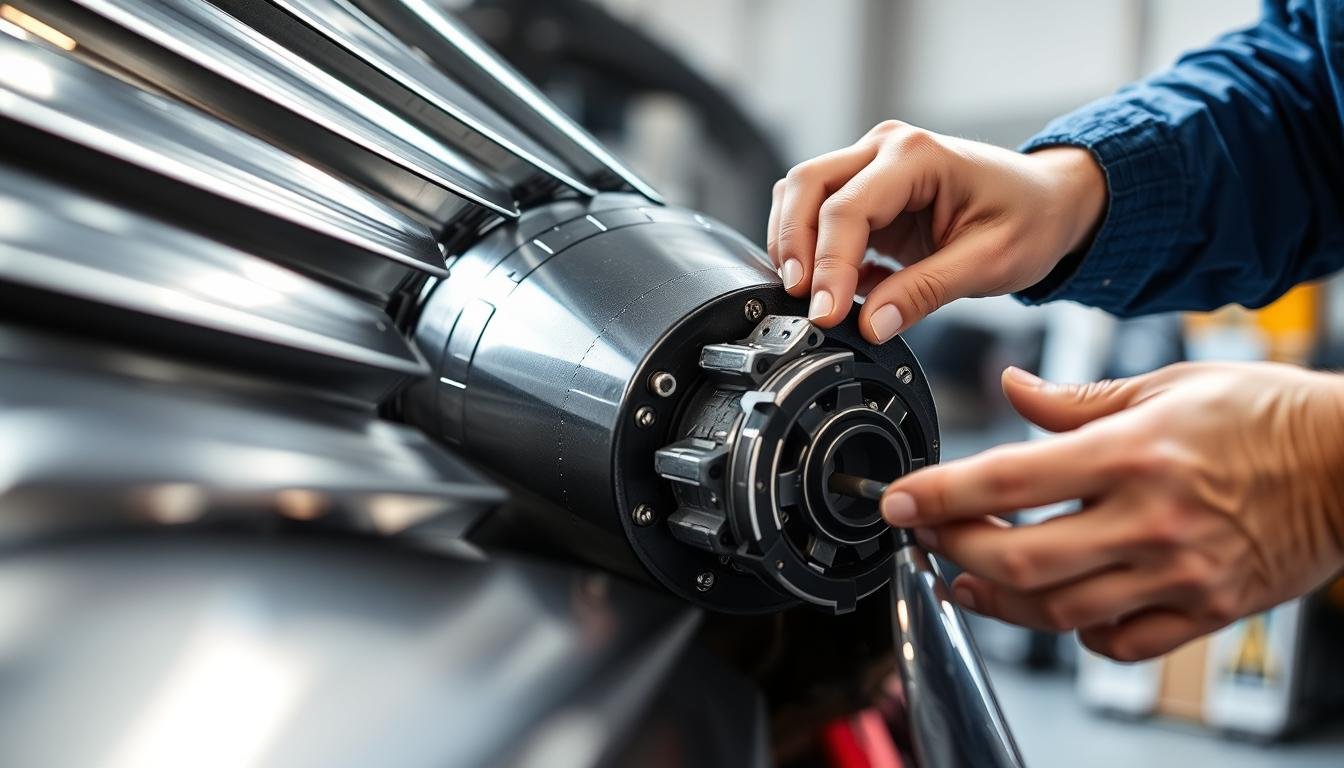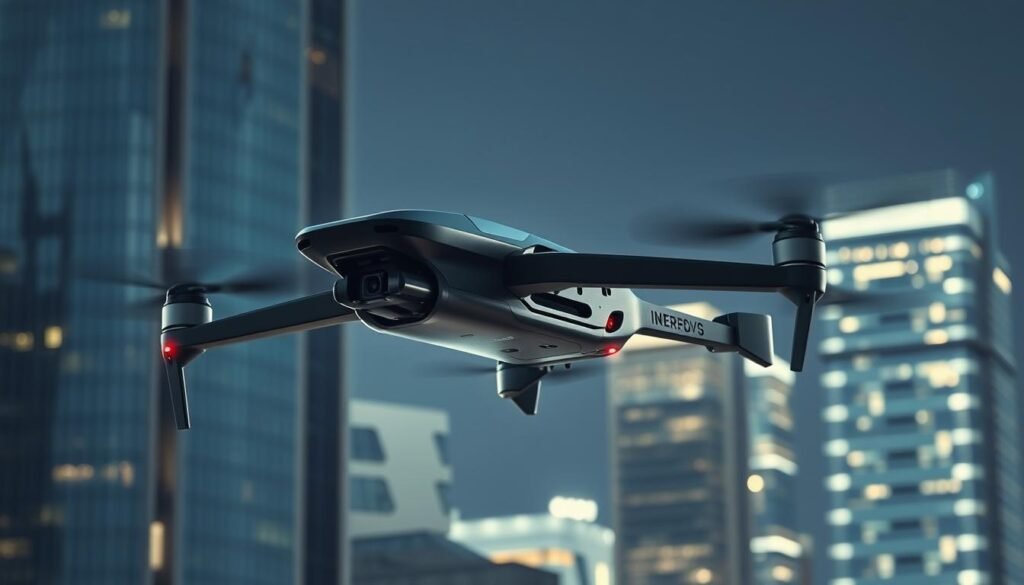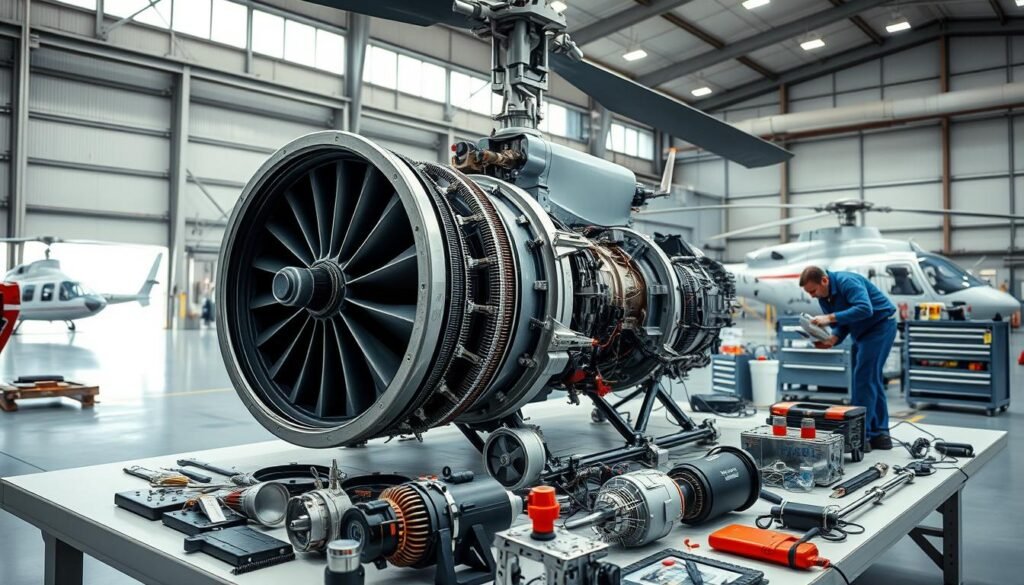Nearly 40% of unplanned helicopter groundings trace back to worn or cracked lifting surfaces. That surprising figure shows how small defects can scale into major safety and readiness issues for operators in the United States.
Their components endure constant lift, thrust, drag, and centrifugal stress, which leads to wear, fatigue, and microscopic cracks if not caught early. Rain, sand, bird strikes, lightning hits, and corrosion are common damage modes that reduce efficiency and risk flight interruptions.

A proactive, scheduled program improves aerodynamic performance and fuel efficiency, extends aircraft life, and supports resale value. Thorough recordkeeping and checks ensure compliance with aviation rules and keep commercial and emergency operations ready.
Key Takeaways
- Early detection of fatigue and microcracks prevents in-flight issues and costly downtime.
- Standardized inspections and photo logs help track condition trends over time.
- Proper upkeep boosts control response, lowers fuel burn, and supports mission readiness.
- Understanding erosion, delamination, corrosion, and impact scoring guides focused inspections.
- Complete records and approved repair methods protect aircraft value and regulatory compliance.
Rotor Blade Maintenance Foundations For Safety, Performance, And Compliance
High lift forces and repeated cyclical loads make airfoil care a frontline safety task for every helicopter operator. A concise foundation ties safety, efficiency, and rule compliance into a single program that keeps aircraft ready and dependable.
Ensuring Safety And Reliability Under High Operational Stress
Inspections must find fatigue indicators early so cracks do not grow during heavy work cycles. Teams should log trends and assign clear custodians for condition records to avoid gaps.
Maximizing Aerodynamic Performance And Fuel Efficiency
Keeping clean surfaces and intact leading-edge protection preserves lift and lowers power demand. Smoother surfaces reduce vibration and cut wear across the drive train.
Extending Aircraft Service Life And Protecting Asset Value
Timely repairs and corrosion control extend service life and preserve resale value. Material-aware practices for metallic and composite blades slow damage progression.
Meeting U.S. Aviation Regulations And Recordkeeping Requirements
Documented inspections, corrective actions, and sign-offs align with oversight and prevent fines or grounding. Operators should embed blade care into safety systems with recurring checks and trend tracking.
Maintaining Operational Readiness For Commercial And Emergency Operations
Preemptive windows, parts planning, and trained crews shorten turnarounds and limit AOG events. For a practical primer on program structure, see rotor blade maintenance guidance.
How To Conduct Rotor Blade Inspections And Testing
A methodical inspection routine uncovers subtle wear before it grows into a costly failure. Teams should begin with proper prep and follow a clear sequence so every span and interface gets checked.

Pre-Inspection Prep: Cleaning, Lighting, And Access
Begin with a freshwater wash to remove contaminants and restore contrast. Use controlled lighting and stable access platforms so crews can photograph and log the full span from root to tip.
Visual Checks: Leading Edge, Trailing Edge, Surface Finish, And Paint Condition
Inspect the leading edge for erosion and impact nicks, and the trailing edge for splits or lifted seams. Note paint loss and surface scuffs that may reveal subsurface issues.
Tactile Methods And Nondestructive Testing
Run a gloved hand along the trailing edge to feel dents and irregularities. In quiet areas, use coin-tap checks on composite skins to map suspect spots for NDT.
| Method | Best Use | Detects |
|---|---|---|
| Dye Penetrant | Surface metal inspections | Surface cracks and nicks |
| Eddy Current | Fastener zones and conductive skins | Subsurface cracks near edges |
| Ultrasonic | Composite and internal checks | Delamination and internal defects |
| Radiography | Complex internal structure issues | Hidden structural anomalies |
Detect critical damage categories such as erosion, corrosion, cracks, delamination, and impact marks from strikes or FOD. Verify pressurized spar indicators and use soap-bubble or halogen sniffers for leaks.
Track vibration, trim shifts, or track splits as signs of internal water ingress or shifted weights. Record measurements, photos, and NDT results. If trends point toward structural failure, ground the aircraft and escalate repairs.
Further reading on inspection methods is available at blade inspection method. For prevention strategies see preventing rotor blade damage.
Repair Process: From Damage Assessment To Return To Service
A structured repair workflow turns inspection findings into a verified path back to flight.
Inspection And Assessment begins by combining visual checks and NDT data to define damage limits and whether the condition meets published repair criteria. If repairs exceed limits, engineering approval (for example, FAA 8110) is required before work proceeds.
Cleaning And Surface Preparation
Technicians remove loose material, contaminants, and corrosion, then taper-sand to a sound surface. Proper scarf ratios and clean bond faces are essential for long-term structural integrity.
Selecting The Correct Repair Method
Method choice depends on construction: metal skins get patches and rivets, while composite repairs use compatible fabrics and resins. The team selects materials and cure schedules that match original properties.
Applying Materials And Curing
Use adhesives, film or paste systems, vacuum bagging, or autoclave cycles to achieve void-free bonds. “Controlled pressure and temperature assure continuity and minimize the risk of future failure,” says a senior repair engineer.
Finishing, Testing, And Certification
Restore aerodynamic contour with precision fairing and paint, and reapply leading-edge protection without upsetting balance. Perform NDT and static tests, complete logbook entries, and obtain required approvals before return to service.
“Accurate records of materials, cure data, and balance checks are the final safeguard for airworthiness.”
- Define limits with measurement and NDT.
- Prepare scarfed, contaminant-free surfaces.
- Use autoclave where complex composite geometry demands it.
- Verify with NDT, testing, and documented certification.
For deeper technical guidance on repair techniques and composite practices, consult a detailed industry reference such as blade repair techniques.
Preventive Maintenance Techniques For Long Blade Life
Targeted protection and careful handling preserve balance and prevent hidden damage. A concise preventive program reduces corrosion, controls erosion, and keeps paint weight within service limits.

Corrosion Prevention: Freshwater Washes And Approved Inhibitors
Perform a freshwater wash with mild soap, then apply approved inhibitors such as Corrosion-X, ACF-50, or LPS.
In coastal or high-chloride areas, increase frequency to daily. Protect metallic fasteners and weights while avoiding waxes or oils on composite skins to preserve paint adhesion.
Erosion Control: Leading-Edge Protection, Coatings, And Touch-Up Practices
Use OEM protections like hard anodizing or erosion strips. Add polyurethane tape in heavy-wear zones and replace worn tape before substrates show.
For small exposed metal areas, apply lacquer touch-ups and remove excess with naphtha if balance is affected.
Painting And Balance: Preserving Chord CG And Avoiding Overweight Blades
Limit blanket overcoats. Replace only worn paint regions to keep chord center of gravity stable.
Track cumulative paint layers and avoid excess weight that exceeds internal balance correction capability.
Handling And Shipping: Containers, Securing Methods, And Records Protection
Use certified containers, retention bolts, and foam or horsehair for restraint. Seal log cards in waterproof bags and secure lids with bolts or bands.
Inspect both before and after sealing to catch freight damage risks.
| Task | Best Practice | Primary Benefit |
|---|---|---|
| Freshwater Wash | Mild soap + approved inhibitor | Removes salts; limits corrosion |
| Leading-Edge Protection | OEM strip or polyurethane tape | Reduces erosion in abrasive areas |
| Paint Management | Spot touch-ups; limit layers | Preserves chord CG; eases balancing |
| Shipping | Foam/horsehair restraint; sealed records | Prevents transport damage; keeps logs intact |
Conclusion
Timely inspections and approved repairs stop small damage from becoming catastrophic. Regular, well-documented inspection and repair actions avert structural failure, reduce lifecycle costs, and keep helicopters mission-ready.
Consistent maintenance practices — freshwater washes, corrosion inhibitors, edge protection, and careful paint management — extend service life and preserve performance. Use NDT and testing to confirm subsurface condition and validate any blade repair.
Engineered expanded repairs and autoclave cures, when approved and recorded, return high-value parts to service. Operators should prioritize fast assessment, clear records, and technician training to limit downtime and protect flight safety. For practical program structure, see rotor blade maintenance guidance.
FAQ
What are the primary risks if a helicopter’s main lifting surfaces are not inspected regularly?
Neglecting regular inspections increases the chance of structural failure, in-flight vibration, reduced aerodynamic efficiency, and premature component fatigue. Operators may see higher fuel burn, more frequent unscheduled removals, and elevated safety risk during critical operations such as search-and-rescue or offshore work.
How often should full-span inspections and non-destructive tests be performed?
Inspection intervals depend on the aircraft type, manufacturer guidelines, and operational environment. High-use or offshore aircraft typically require more frequent checks. Operators should follow OEM manuals and FAA directives, and increase frequency after known strikes, lightning events, or severe weather exposure.
What signs indicate possible composite delamination or internal damage?
Symptoms include soft spots, unexpected vibration, visible surface depressions, and changes in tracking. Technicians use tactile methods, coin-tap, ultrasonic scanning, and eddy-current testing to confirm internal defects before repair.
When is a structural repair preferable to a component replacement?
Repairs are chosen when damage is within repair limits defined by the manufacturer and when restoration will meet strength and fatigue requirements. Replacement is required for compromised spar webs, extensive corrosion, or damage beyond approved repair limits to ensure safety and certification.
What procedures ensure bond integrity during composite repairs?
Thorough cleaning, controlled surface abrasion, proper solvent wiping, correct adhesive selection, and tightly controlled cure cycles—often performed in an autoclave for complex layups—ensure structural bonds meet design strength and longevity targets.
How do leading-edge protection systems reduce erosion and strike damage?
Leading-edge guards, erosion-resistant coatings, and sacrificial strips absorb particle damage and extend service life. Routine inspection and timely touch-ups maintain aerodynamic shape and prevent progressive material loss that can affect handling and stress distribution.
What role does weight and balance play after repainting or refinishing surfaces?
Paint and surfacing layers alter mass distribution. Certified technicians verify chordwise center of gravity and overall mass to maintain rotor balance. Improper refinishing can create tracking issues and increase vibration, so careful weight control is critical.
Which methods identify corrosion on metallic components hidden beneath coatings?
Visual inspection after careful coating removal, borescope checks of internal cavities, and targeted dye-penetrant or ultrasonic inspections expose subsurface corrosion. Preventive freshwater washes and corrosion inhibitors limit onset in corrosive environments.
How are repairs documented to meet FAA and operator recordkeeping requirements?
Every inspection and repair is recorded with defect descriptions, method references to the OEM repair manual, parts used, technician certifications, test results, and return-to-service approvals. Complete logs support airworthiness compliance and future maintenance planning.
What balancing and tracking steps are required after a repair?
Dynamic balance checks, static weighing to confirm mass distribution, low-speed tracking trials, and in-flight vibration monitoring verify that repairs did not introduce imbalance. Corrections may include tip weights, trim adjustments, or fine sanding of finish.
Which non-destructive testing technique works best for detecting surface cracks on metal edges?
Eddy-current testing is highly effective for surface and near-surface cracks in conductive metals. Dye-penetrant inspections also detect fine surface cracks but require proper cleaning and lighting. Choice depends on material, access, and crack orientation.
How should operators prepare components for shipping or long-term storage?
Use certified shipping containers, secure components to prevent flexing, apply corrosion inhibitors, and document condition with photos and inspection reports. Include handling instructions and environmental controls to prevent moisture ingress during transit.
What immediate actions should follow an impact strike during flight operations?
Land as soon as practicable, perform a preliminary visual check, document the event, and ground the aircraft for a detailed inspection. Log the strike in maintenance records and follow OEM damage assessment procedures before returning to service.
How do autoclave cures improve composite repair outcomes?
Autoclave curing applies controlled heat and pressure to consolidate plies and remove voids, producing a stronger, lighter repair with superior fatigue and environmental resistance compared with out-of-autoclave methods.d performance. By adhering to best practices such as regular inspections, cleaning, balancing, and tracking, pilots and maintenance crews can ensure that rotor blades remain in optimal condition. Proper care of rotor blades not only enhances the longevity of the helicopter but also prevents costly repairs and, most importantly, reduces the risk of in-flight failures. As technology continues to advance, newer rotor blade materials and smart systems will further improve safety and reduce maintenance demands, allowing helicopters to operate more efficiently in a wide range of environments.
Related Articles
- Understanding Helicopter Vibration Analysis: Key to Preventing Major Failures
- How AI and Big Data Are Shaping the Future of Helicopter Maintenance
- Upgrading Helicopter Systems: When and Why to Modernize Your Aircraft
- The Importance of Regular Avionics Checks for Helicopter Performance
- Helicopter Maintenance in Extreme Weather Conditions: What Technicians Need to Know
More from This Category
- Digital Cockpits: How Modern Technology Is Transforming Helicopter Navigation
- The Role of Predictive Maintenance in Helicopter Fleet Management
- Innovative Materials in Helicopter Design: Enhancing Durability and Efficiency
- How Helicopter Technology Is Revolutionizing Emergency Response Operations
- Rotor Blade Maintenance: Why It’s Critical for Safe Flight
- The Future of Autonomous Helicopters: What Technology Holds for the Aviation Industry
- Helicopter Engine Maintenance: Best Practices for Longevity and Efficiency
- How Advances in Avionics Are Improving Helicopter Safety and Performance
- Routine Helicopter Maintenance Checklist: What Every Pilot Should Know
- The Evolution of Helicopter Technology: From Early Models to Modern Innovations



